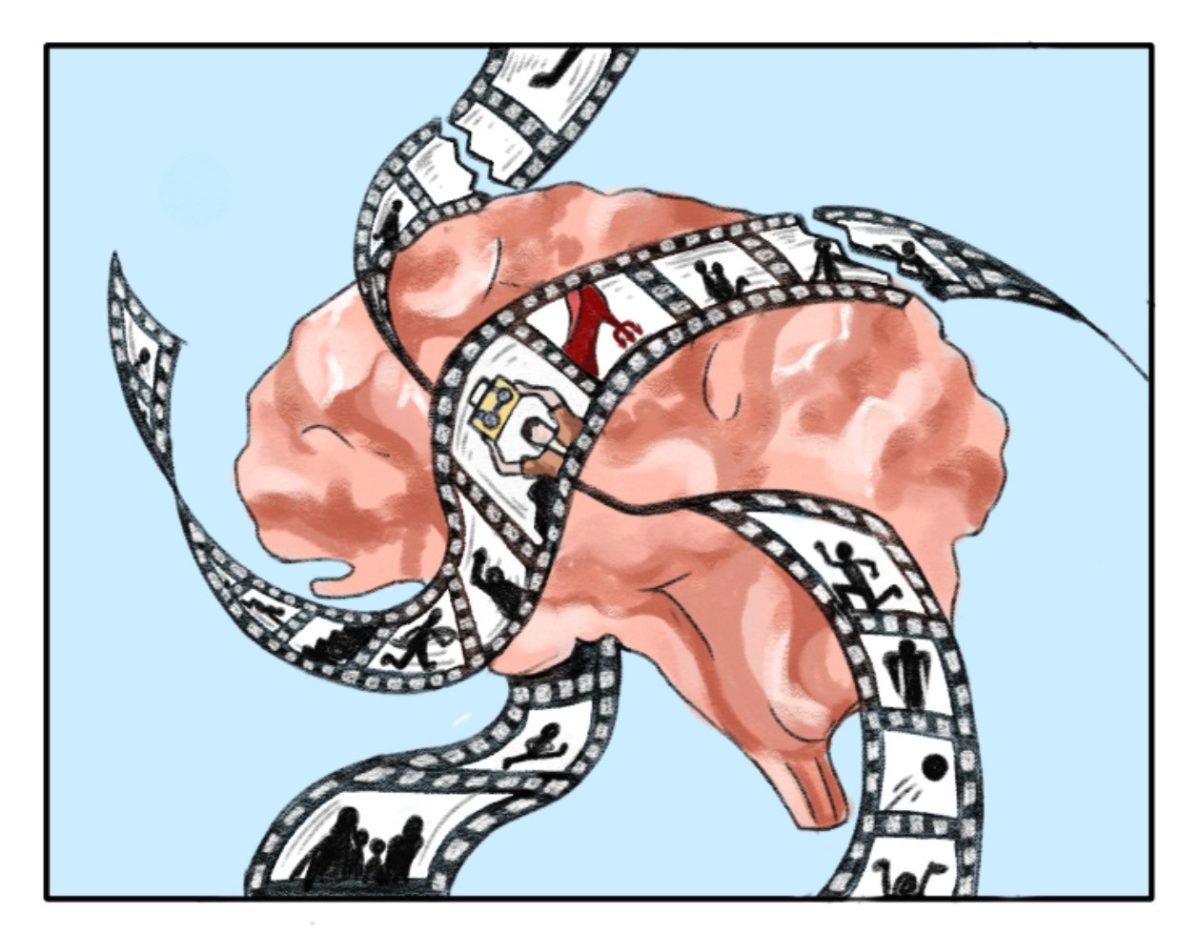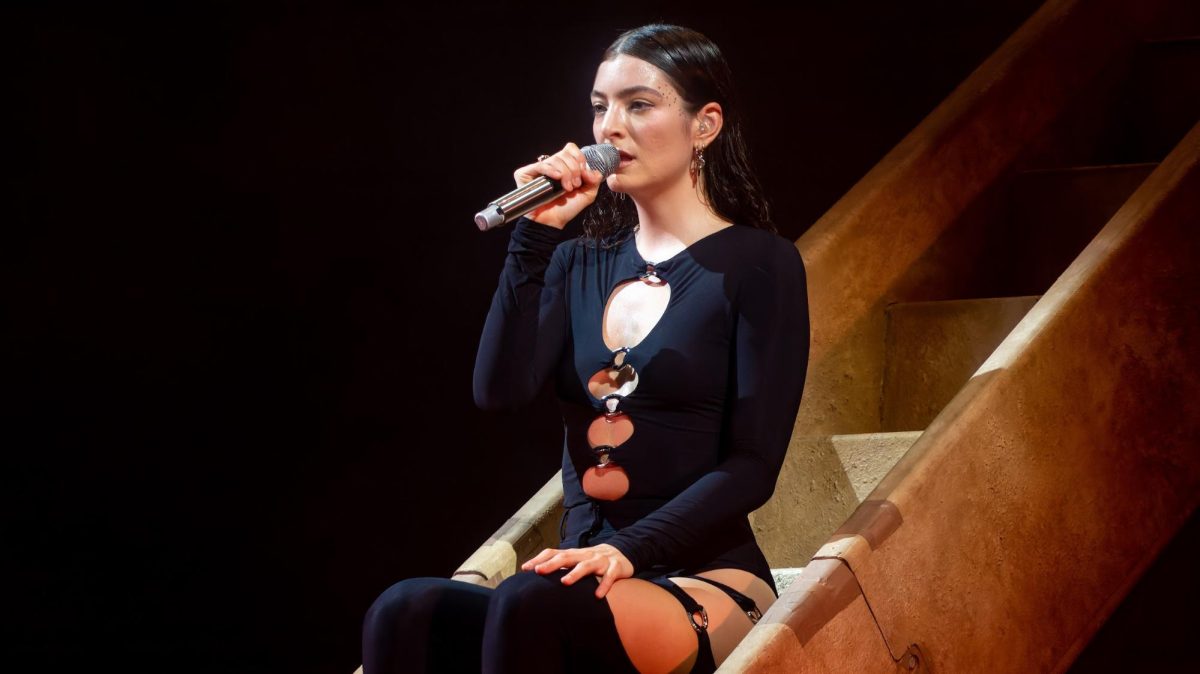A binge-worthy movie or TV series. Check. Delectable snacks. Check. The perfect screen to watch it on. Check. Attention span…now that one is debatable. You sink into your seat, ready to lose yourself in a cinematic masterpiece—only to find your mind drifting ten minutes in. Are you about to fall asleep? Get distracted? Or maybe your brain is still replaying that TikTok you watched five minutes ago?
With short-form content dominating social media, doomscrolling becoming second-nature, and the infamous ‘brainrot’ setting in, it might feel like long-form content just isn’t meant for our generation anymore. However, all hope is not lost. Despite the prevalence of short-form media content, Gen Z is still finding its way back to classic movies—whether they be romantic comedies, action films, coming-of-age stories, legal dramas, or others. Long-form content isn’t irrelevant—it’s simply waiting to be rediscovered by a generation starved of depth. In all its glory, a well-crafted movie doesn’t just pass time—it stretches your attention span, pulls you in emotionally, and rewards you with something short clips never could: immersion, meaning, and the luxury of feeling something real.
Long-form content offers a richer, more meaningful kind of escape—one that grabs hold of your drifting attention and, piece by piece, rebuilds the focus that brainrot tries to dismantle. It’s no secret that doom scrolling is rewiring how we process information. That’s why it’s worth pausing to ask: have we truly outgrown movies—or have we simply let modern distractions make us forget why we cared in the first place?
As Zisha Jiwani, a junior at Great Neck South High, points out, “You’re just so used to using TikTok that, if there’s any second you’re not doing anything, you’ll just open it and think, Let me scroll for a little bit. But then you just end up scrolling so much. And the effect is that it shortens your attention span, which makes TikTok even more popular because you don’t have the attention span to watch YouTube, Netflix, and other platforms.”
Many of us can relate; our brains now crave instant gratification, rejecting anything that doesn’t deliver a quick buzz. But that’s exactly why movies—-and other long-form content—are more pertinent than ever. In today’s culture of speed and constant stimulation, well-crafted movies encourage us to embrace patience, presence, and the slow-burn—a worthy wait for the emotional payoff.
“I can’t think of many movies that exceed two or three hours unless it’s something like Endgame—which I didn’t actually finish. But that doesn’t mean I wasn’t motivated to watch a long movie; I just wasn’t prepared for it,” says junior Rachael Weng. “What motivates me to watch long movies is other people’s reviews, the cast—whether the actors are attractive, haha, or really famous and have played roles I liked before—and, of course, if I paid to watch it in theaters,” Weng continues.
The truth is, movies sometimes require mental preparation. It’s not about just passively watching; it’s about engaging with the plot, the characters, and themes—especially when the subject matter is heavy or thought-provoking, like domestic violence, which aims to raise awareness and stir reflection.
Movies allow us to slow down, to immerse ourselves fully in stories that unfold with intention, and to appreciate the depth and nuance that cannot be captured in a few seconds. Despite the COVID-19 pandemic, teens are returning to the tradition of going to the movies with friends or family, sharing a collective experience that sparks conversations and encourages the exchange of future movie recommendations.
“When I’m watching my show, I know I have nothing to do, and I just like enjoying it. I choose to do it,” says junior Hannah Hui. That choice matters. Doomscrolling feels automatic and mindless. Watching a movie is intentional—a slow re-training of the brain to focus and stay present. The more the story unfolds, the more your brain syncs with it—not for instant gratification, but for sustained interest.
Long-form content doesn’t just offer depth—it immerses us in a world where storytelling and intricate production come together to elicit thinking and empathy.
“With movies, I’m more drawn to the characters, plot, and cinema. But with short-form content, you don’t really get that immersive experience,” Weng explains. The key word here is “immersive.” The experience of mindlessly scrolling through a stream of short clips feels like watching someone’s life or event through a window—detached and passive. In contrast, a movie invites viewers to engage with the characters throughout the story. For longer-form content like movies, recognition exercises cognitive thinking; understanding a character in a movie may remind you of yourself, people in your own life, or other characters you’ve seen before. Long-form entertainment has a way of pulling you in, and before you know it, you’re either tearing up or thinking rent-free about fictional characters you just met two hours ago.
“[Movies] are just more fun. There’s more time to build up a more rewarding story, and movies often have crazier budgets and really dedicated talents that take months, sometimes years, to make these films. It’s also telling when a movie is longer than the usual 2 hours, because that means that someone thought this movie was so good that it justified a longer runtime. I think The Batman is a great example. As a comics fan, that movie did a great job in setting the tone of the movie and establishing what it’s trying to do, achieving a greater, clearer final product,” said junior Jonathan Jun.
Let’s be real: we all know the feeling of being hit by a movie’s final scene. That epiphany or emotional gut-punch? You don’t forget it. When it comes to cultural impact, movies leave a mark. They shape how we see ourselves and the world around us. Representation in movies and TV isn’t just a trend—it’s a legacy. These stories help define our identities, and by extension, shape the future of pop culture.
“I always end up feeling really sentimental or inspired or some other strong feeling, depending on the movie. I’d like to be a writer, so I think there’s a lot to gain from watching movies and seeing how the creator chose to tell their story. I think movies are more likely to be a valuable piece to study over, like Instagram reels,” Jun adds.
We’ve all left a movie feeling like it changed our brain chemistry. Sounds dramatic, but it’s true. How else do you explain cosplaying, quoting our favorite lines, or tearing up during rewatches? They show up in fashion, senior quotes, group chats, social media, theater performances, and even themed birthday parties. They don’t just entertain us—they become a part of us. They help define our generation.
Some movie references never get old—like “May the Fourth be with you” from Star Wars. Quotes and scenes from beloved classics like “Bend and snap!” from Legally Blonde, “I hate the way I don’t hate you” from 10 Things I Hate About You, or the epic makeover in She’s All That. Teen movies have been shaping culture and gaining popularity since the 1950s due to the influence of rock ‘n’ roll and post-war economic prosperity. While early films explored serious topics, their conservative tone often made them feel shallow. In a recent survey most teens said they prefer fun, escapist content (37.8%), real-world issues (21%), or relatable stories (19.6%).
We teens have become experts at recognizing what resonates—and what doesn’t. We value authenticity, diversity, and meaningful storytelling. We’re not into the glamorized, polished version of life anymore. We can sniff out superficiality from a mile away—we crave content that’s genuine and relatable, even when it’s messy, awkward, or imperfect.
The appeal of long-form entertainment isn’t fading—it’s alive and continues to shape the way teenagers think, feel, and connect. Unlike short-form content, which often prioritizes instant gratification in a mind-numbing flurry, longer stories invite reflection and encourage emotional investment. Whether it’s the comfort of revisiting a familiar world, the thrill of unraveling complex themes, or the way a story has you smiling or wiping away tears during tear-jerking moments, these experiences are irreplaceable—certainly not to be overshadowed by short clips. Those who’ve drifted away from this kind of storytelling are missing out on something far more meaningful than just entertainment—it’s a source of comfort, identity, and shared human connection.
If you’ve let go of long-form entertainment like movies, maybe it’s time to rekindle those memories and bring them back into your life—chances are, you’ll be surprised. The impact of a great story goes far beyond the immediate buzz of quick hits—it stays with you, lingering long after the final scene fades to black.








